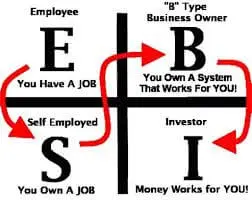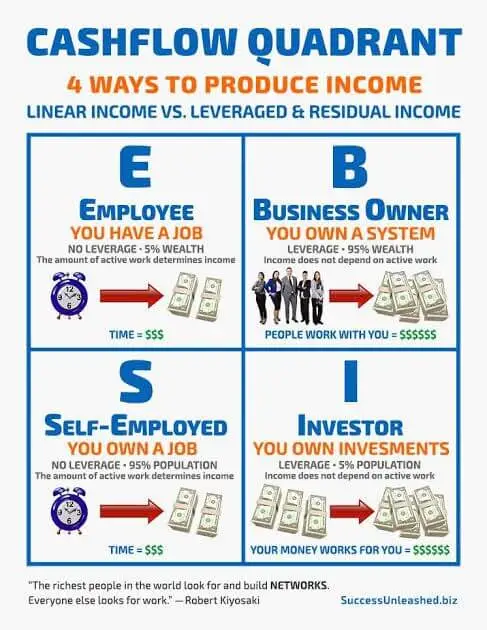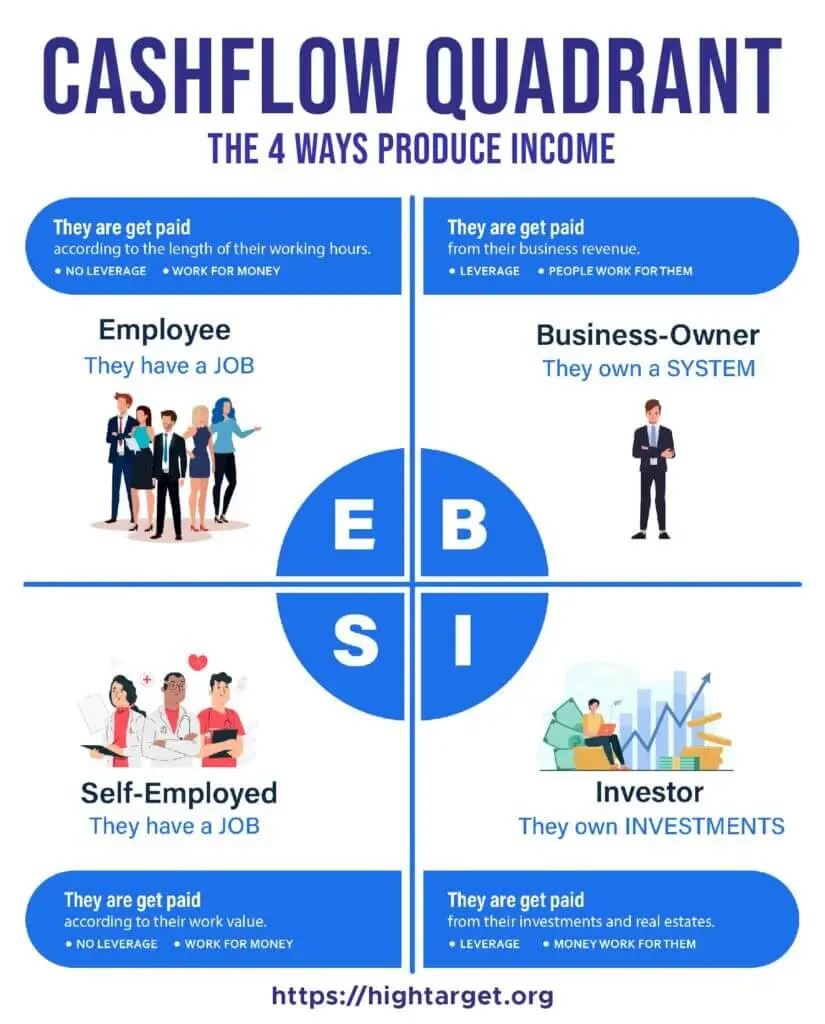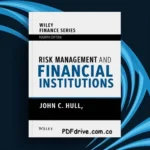In the quest for financial freedom, the concept of the Cashflow Quadrant PDF provides valuable insights into the different ways people earn income and build wealth. This model, popularized by renowned author and investor Robert T. Kiyosaki, categorizes individuals into four distinct quadrants: Employee (E), Self-Employed (S), Business Owner (B), and Investor (I). Each quadrant represents a unique approach to generating income, and understanding them can profoundly impact our financial journey.
| PDF Title | Cashflow Quadrant PDF |
|---|---|
| Book File Type | PDF Download |
| No of Pages | 322 |
| Category | Financial |
| Auther | Robert T. Kiyosaki |
| Originally Published | 2005 |
| PDF File Size | 3.12 MB |
| Language | English |
| Chek the latest edition |

Table of Contents
Understanding the Cashflow Quadrant PDF
The Employee (E) Quadrant
The E quadrant comprises individuals who work for others, trading their time and skills for a fixed salary or wages. While job security may be appealing, the limited control over their income and time makes it challenging to achieve significant financial growth.
The Self-Employed (S) Quadrant
In the S quadrant, individuals are self-employed professionals, such as doctors, lawyers, or freelancers. While they have more control over their income and schedule compared to employees, their businesses often rely heavily on their active involvement, limiting scalability.
The Business Owner (B) Quadrant
The B quadrant represents individuals who own and operate businesses. Business owners build systems and teams to run their ventures, allowing them to leverage the efforts of others and create passive income streams.
The Investor (I) Quadrant
Investors in the I quadrant focus on growing their wealth through various investment opportunities, such as stocks, real estate, and startups. By making their money work for them, they achieve financial freedom.

Key Insights from the Cashflow Quadrant PDF Book
Financial Mindset Shift
One of the fundamental lessons from the Cashflow Quadrant PDF book is the need for a mindset shift. Moving from the E and S quadrants to the B and I quadrants requires embracing a different approach to money, risk, and opportunity.
Importance of Passive Income
The book emphasizes the significance of passive income, which allows individuals to earn money even while they are not actively working. Passive income provides the freedom to pursue other interests and explore new ventures.
Building Assets vs. Working for Income
Shifting from being an employee or self-employed to a business owner or investor involves transitioning from labor-intensive income to building assets that generate wealth independently.
Embracing Risk and Uncertainty
The Cashflow Quadrant highlights the importance of embracing risk and stepping out of one’s comfort zone to achieve financial success. Calculated risks often lead to significant rewards in the long run.
Moving from E to S Quadrant
Developing Specialized Skills
To transition from the E to S quadrant, individuals must invest in developing specialized skills that are in demand and can be monetized independently.
Creating a Side Business
Starting a part-time business while still employed allows individuals to test their entrepreneurial ideas without fully committing to the S quadrant.
Transitioning to Self-Employment
Once the side business gains traction and provides a stable income, individuals can consider transitioning fully into the S quadrant.
Advancing from S to B Quadrant
Scaling the Business
To move to the B quadrant, self-employed individuals must focus on scaling their businesses by delegating tasks and
Business Owner Challenges and Solutions
Business owners face challenges in maintaining business sustainability and managing their teams effectively. Implementing clear communication channels and fostering a positive work culture can help overcome these hurdles.
Investor Challenges and Solutions
Investors must navigate market volatility and make wise investment decisions. Conducting thorough research, diversifying their investment portfolio, and seeking advice from financial experts are essential for successful investing.

Creating Multiple Streams of Income
The Importance of Diversification
Creating multiple streams of income reduces reliance on a single source and provides stability during economic downturns.
Exploring Different Income Sources
Individuals can explore various income-generating opportunities, such as rental properties, online businesses, dividend-paying stocks, and royalties from intellectual property.
Achieving Financial Freedom
Assessing Your Financial Goals
Clearly defining financial goals and creating a detailed plan to achieve them is crucial on the path to financial freedom.
Developing a Long-Term Plan
Financial freedom is a journey that requires discipline and patience. Developing a long-term plan ensures steady progress towards the desired financial state.
Staying Committed to Financial Independence
Staying committed to the financial plan, even during challenging times, is vital to achieving lasting financial freedom.

Conclusion
The Cashflow Quadrant PDF concept offers a profound perspective on financial success. By understanding the different quadrants and strategically transitioning from one quadrant to another, individuals can pave their way to financial freedom and wealth accumulation.
To embark on this journey successfully, one must be open to learning, embracing risks, and diversifying income sources. The transition from being an employee or self-employed to becoming a business owner or investor requires dedication, perseverance, and a willingness to step out of one’s comfort zone. More
FAQs
What is the Cashflow Quadrant concept?
The Cashflow Quadrant PDF concept, popularized by Robert T. Kiyosaki, categorizes individuals into four quadrants (E, S, B, and I) based on their income generation methods and mindset towards money.
Who is the author of the Cashflow Quadrant book?
The author of the Cashflow Quadrant PDF book is Robert T. Kiyosaki, a renowned investor, entrepreneur, and financial educator.
How can I shift from the E quadrant to the B quadrant?
To shift from the E quadrant to the B quadrant, you must focus on building a scalable business that operates with systems and teams, allowing you to generate passive income.
Is the Cashflow Quadrant PDF applicable to any industry?
Yes, the Cashflow Quadrant concept is applicable to individuals in any industry or profession as it addresses fundamental principles of income generation and wealth-building.
Where can I learn more about investing in the I quadrant?
To learn more about investing in the I quadrant, consider reading books on investing, attending financial seminars, and seeking guidance from experienced investors or financial advisors.





